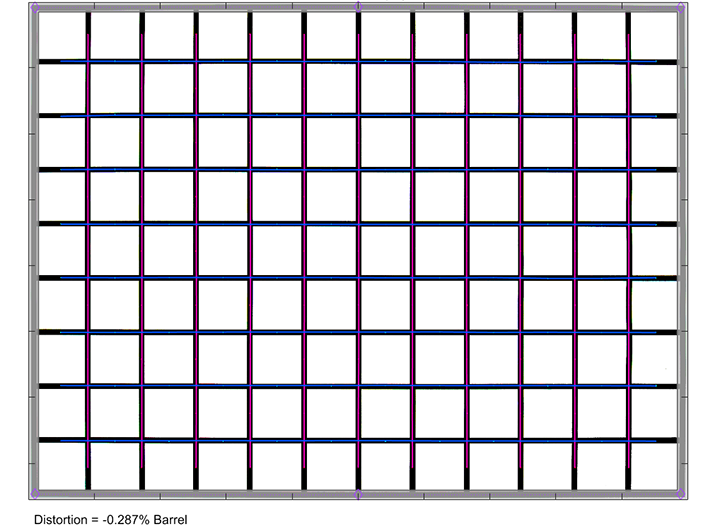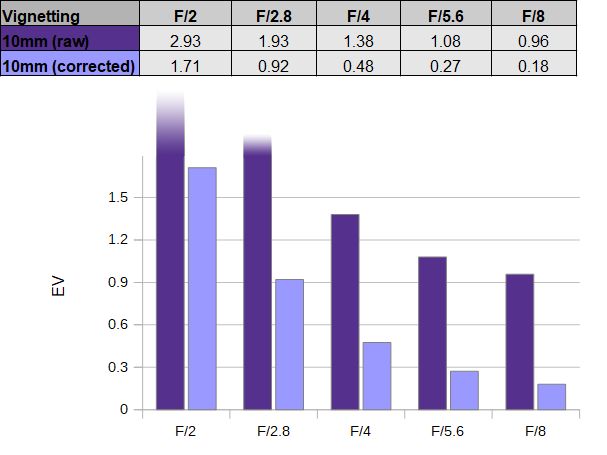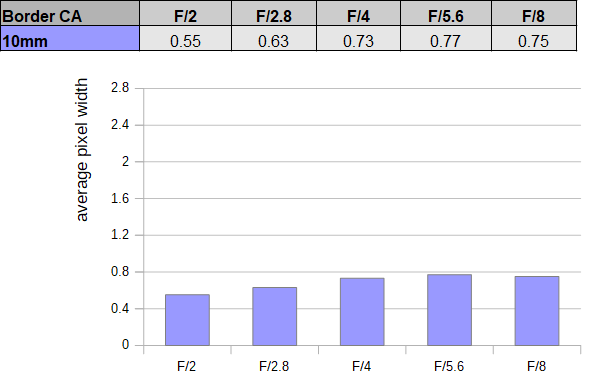by Klaus Schroiff, published January 2021
Introduction
Over the last few years, Laowa has created an arsenal of ultra-wide prime lenses across all relevant systems – and they are still looking for further niches in this segment. They just released the Laowa 10mm f/2 Zero-D MFT. Those who have followed their journey may be a bit surprised. After all, they are also offering a 7.5mm f/2 MFT and a 9mm f/2.8 which aren’t all that old either. However, not everybody needs an extreme wide-angle lens and a 10mm lens (“20mm” full-format) is easier to handle. Beyond the paper-specs are some further differences. The most important evolution is certainly electronic coupling. While it is still a manual focus lens, it supports a camera-controlled aperture, EXIF data as well as an MFT-compliant correction profile. Thus in-camera image stabilization is also possible without any further configuration. Unlike its older cousins, it’s a designated “Zero-D(istortion)” lens thus it has been optically rather than digitally optimized. At $399 (USD), it is also somewhat more affordable.
Another Laowa trademark is an ultra-compact design – and it doesn’t really get much more compact and lightweight than the 10mm f/2. It’s not a pancake lens yet but it comes very close and at just 125g, it’s a feather-weight really. This is especially impressive because, given its maximum aperture of f/2, it’s by no means a slow lens. Fortunately, the low weight doesn’t have a negative impact on build quality. While the lens isn’t weather-sealing it feels very sturdy thanks to a tightly assembled, all-metal body (including the tiny lens hood). The focus ring operates smoothly.

| Specifications | |
|---|---|
| Equiv. focal length (full-format) | “20mm” (in terms of field-of-view) |
| Equiv. aperture (full-format) | “f/4” (in terms of depth-of-field) |
| Optical construction | 11 elements in 7 groups inc. 3x aspherical & 2x ELD elements |
| Number of aperture blades | 5 |
| min. focus distance | 0.12m (max. magnification 1:6.7) |
| Dimensions | 53x41mm |
| Weight | 125g |
| Filter size | φ46mm |
| Hood | petal-shaped, bayonet mount, supplied |
| Other features | – |
| Mount | Micro-Four-Thirds |
Distortion
These days, a “zero distortions” statement doesn’t necessarily mean that a lens is also optically corrected but in this case, the claim has substance. A native barrel distortion of just 0.3% is negligible so the “Zero-D” in the name is well deserved.

Vignetting
You may wonder how the tiny size and the large aperture go together. Well, everything has its limits and it shows with respect to vignetting. The raw vignetting at f/2 is rather excessive at almost 3EV (f-stops) which is way beyond the scale that we are using in our MFT reviews. Stopped down to f/2.8 eases the issue a bit but it isn’t resolved even at f/8 and a falloff of ~1EV.
However, as mentioned, the 10mm f/2 has a built-in correction profile so unless you deactivate auto-correction, the light falloff isn’t quite as harsh but still very visible at f/2 at least. The issue is mostly gone from f/4 in this case. Overall, it is safe to state that the lens is a little underdesigned regarding this characteristic – meaning that a bigger diameter would have helped – but this would have had an impact on the size of the lens.

MTF (resolution)
A very positive aspect of the Laowa 10mm f/2 Zero-D MFT is its resolution. This lens is sharp, really sharp. The center quality is already excellent at f/2 and the borders/corners are also pretty impressive. Stopping down to f/2.8 lifts the quality further and it reaches its maximum potential at f/4 with excellent performance across the image field. Diffraction is a limiting factor beyond albeit the effects remain moderate until after f/8.
The centering quality of the tested sample was Okay with an imperfection on the right image side. A bit of field curvature is present albeit it’s not excessive.
Please note that the MTF results are not directly comparable across the different systems!
Below is a simplified summary of the formal findings. The chart shows line widths per picture height (LW/PH) which can be taken as a measure of sharpness. If you want to know more about the MTF50 figures you may check out the corresponding Imatest Explanations.

Chromatic Aberrations (CAs)
Lateral CAs (color shadows at the image borders) are quite moderate with an average pixel width of ~0.6px at f/2. The CAs increase slightly when stopping down but they remain unobtrusive.

Flare and Sunstars
The 2nd weakness of the Laowa lens is flare although in all fairness – you have to push it really. Below is an example of a worst-case scenario with some very obvious ghostings. Keep in mind that you usually won’t take such a shot in real life.
Sunstars are everybody’s darling these days (somewhat overhyped …) and as you can also see the lens can produce the effect at smaller aperture settings (here: at f/11). You can find some nicer examples on Laowa’s website.

Sample Images
The Laowa 10mm f/2 Zero-D MFT is a fun lens that also has the capability of delivering some serious results. In terms of optical performance it shines with a very high resolution straight from f/2 and it's darn sharp at f/4. As the name implies, it is a fully distortion-corrected lens - which is a rare quality in mirrorless land. And this raises the question of why Olympus/Panasonic can't do the same here. The high corner quality can also be contributed to the fact that distortion correction isn't necessary at all. That being said, auto-correction DOES help when it comes to vignetting. The raw vignetting is on the extreme side at f/2 so unless you are after a keyhole effect you should keep it activated. Even so - some obvious vignetting remains at f/2. Lateral CAs are pretty low and nothing to worry about. Flare can be an issue in extreme lighting situations. If you are after sun stars - yes, the lens can give you these in qualifying scenes when stopping down and the quality is good. We haven't executed a formal analysis of the bokeh but as you can see in the sample image section, the out-of-focus blur is pretty smooth. This is a rather rare quality in an ultra-wide lens.
The Laowa 10mm f/2 Zero-D MFT is a tiny and super-lightweight lens. This doesn't mean that the build quality is suffering - on the contrary, it is actually very good. The lens body is made of metal and the focusing is smooth. There is no weather-sealing though. Unlike early Laowa offerings, the lens is fully coupled thus you can select the aperture on the camera rather than on the lens. EXIF data is also provided. However, you still have to live with manual focusing only. Given the ultra-wide nature of the lens, this shouldn't be a big deal for most users at least.
We quite enjoyed our time with this little marvel also because it highlights what's cool about the Micro-Four-Thirds system - a nice size factor combined with low weight. It may not be perfect in every optical aspect but if you are after a fast ultra-wide lens that doesn't go bonkers in terms of field-of-view, you should have a deeper look.
-
Optical Quality
-
Build Quality
-
Price / Performance


